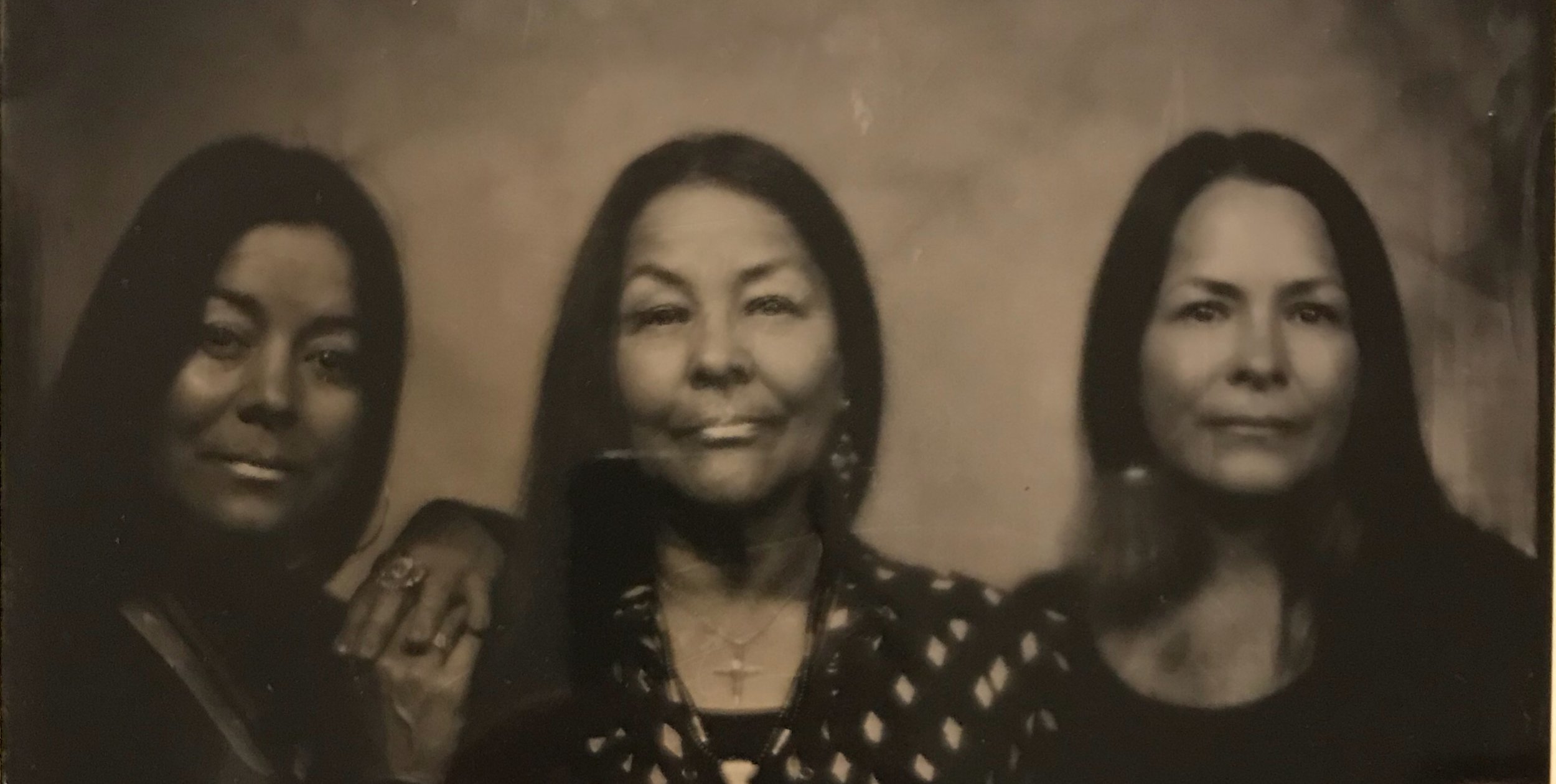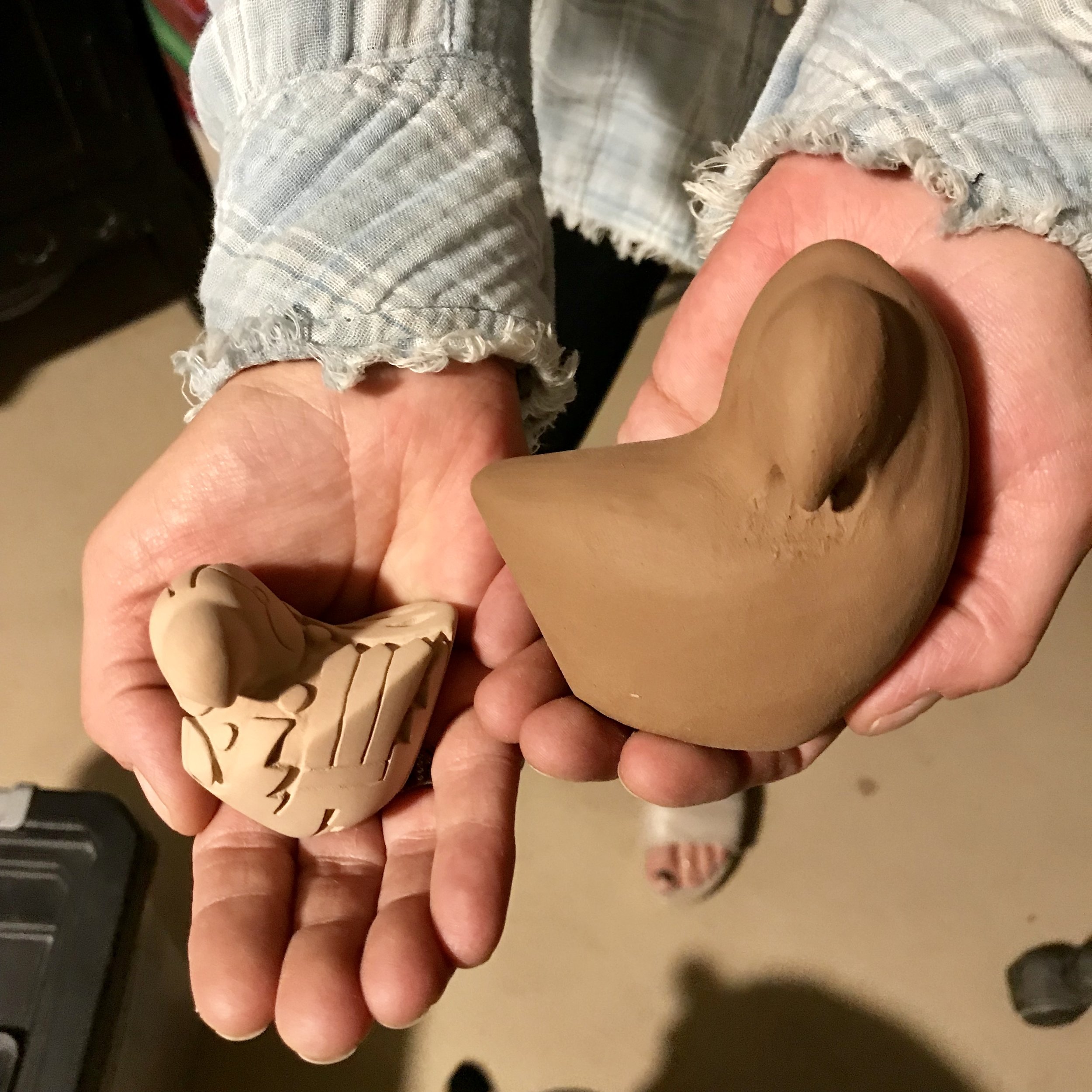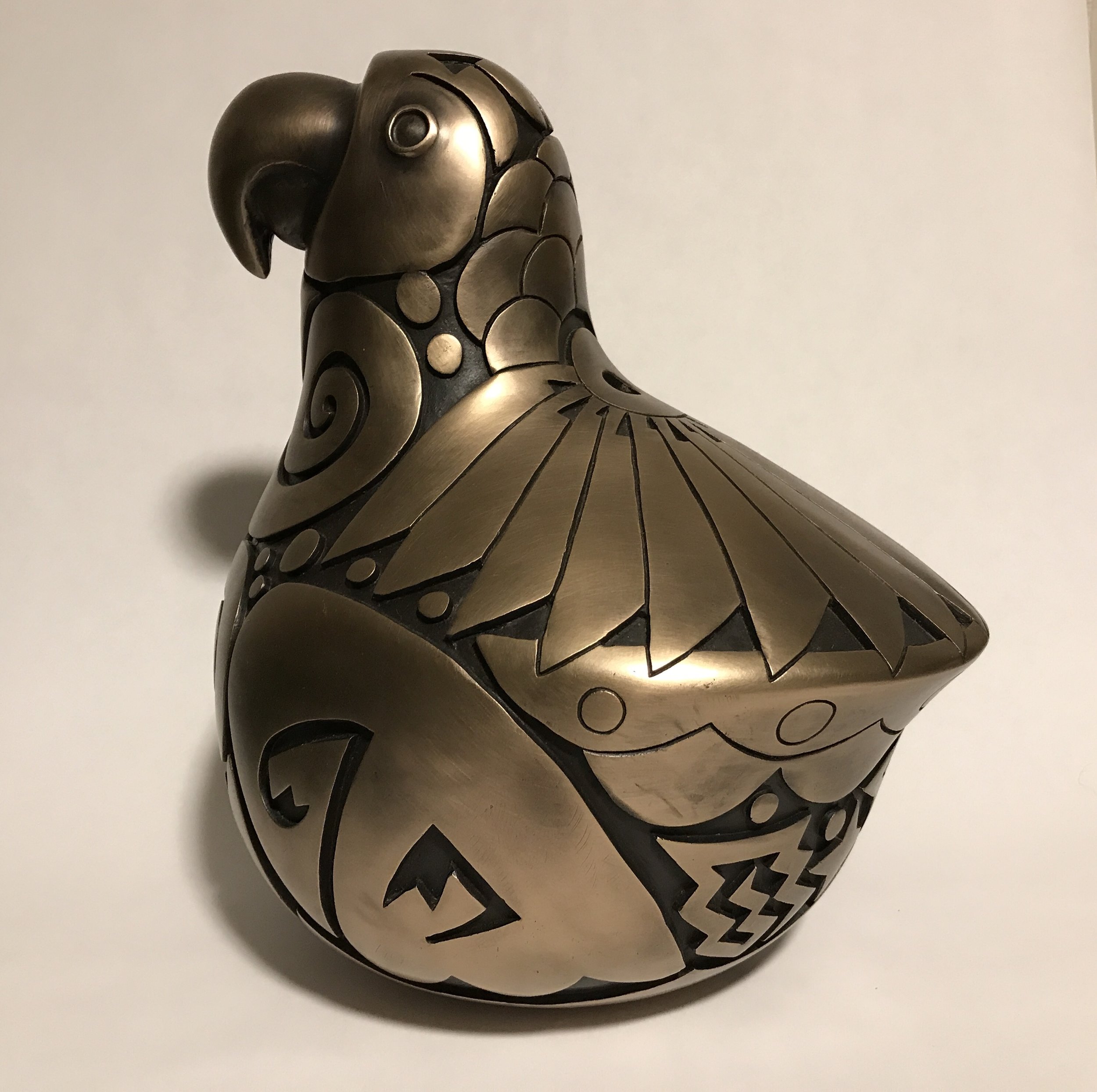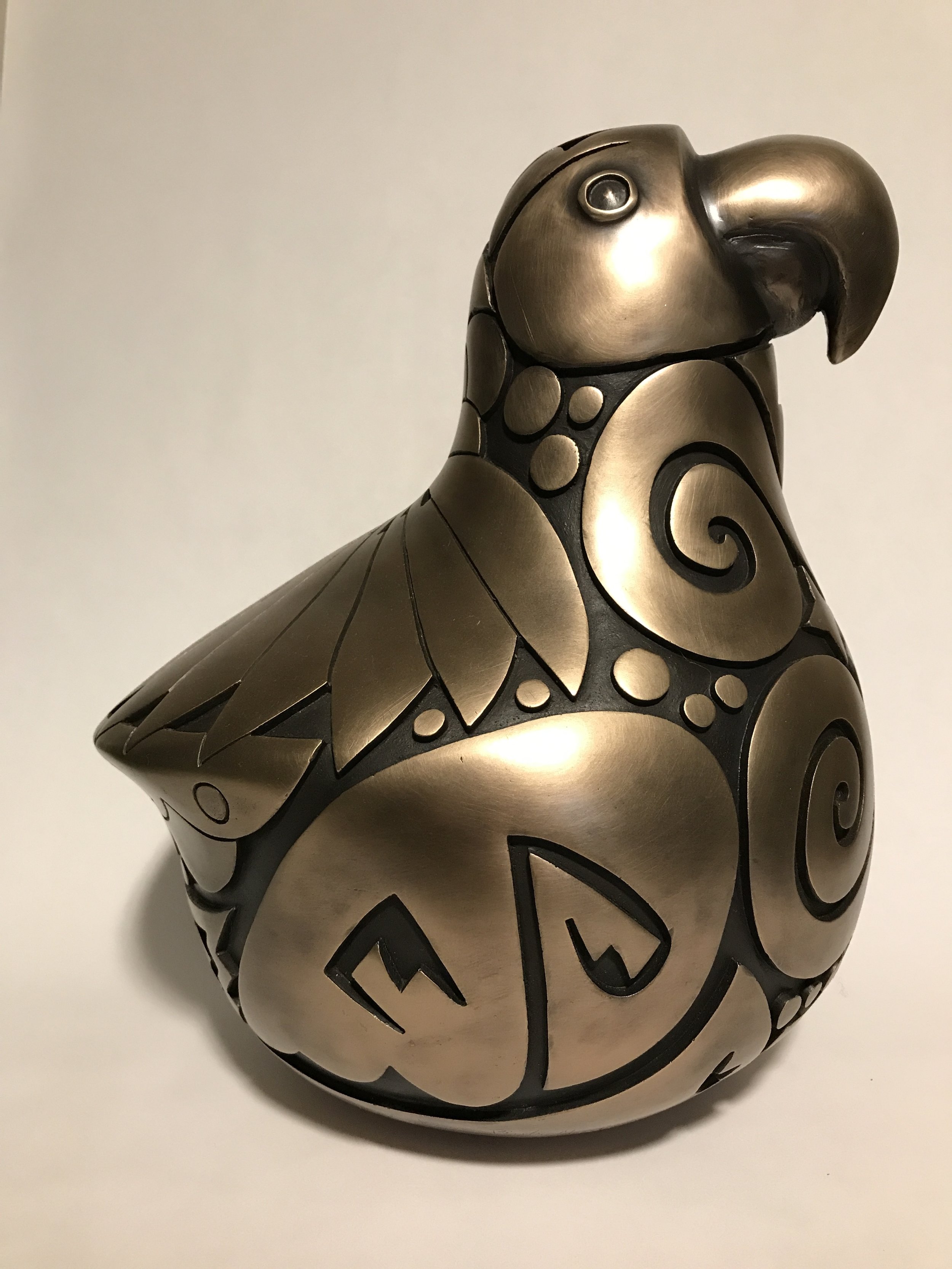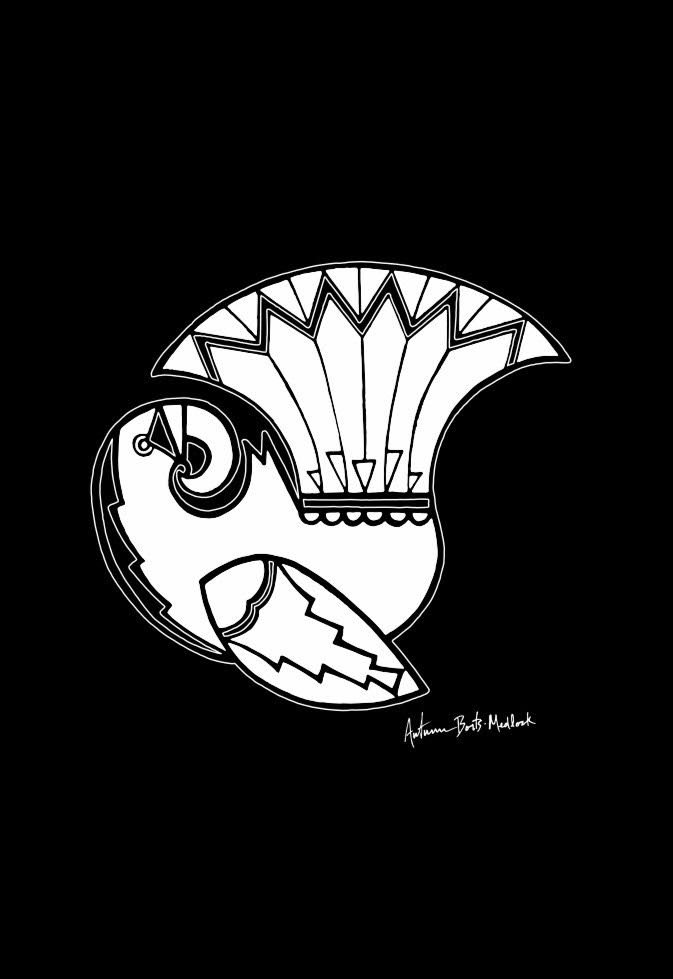Autumn Borts-Medlock is a renowned clay and bronze artist from Santa Clara Pueblo. Autumn hails from a long line of spectacular potters including Sister Tammy Garcia, Mother Linda Cain, Grandmother Mary Cain and Great-Grandmother Christina Naranjo. "Growing up in Santa Clara Pueblo, in a family whose connection to the clay goes back generations, pottery has always been a part of my life. I was introduced to the art form as a child, making my first formal attempts at claywork under the guidance of my mother and grandmother," explains Autumn. The artist draws from the spiritual symbolism and nature-oriented design aesthetics of Native culture.
Autumn Borts-Medlock poses with mother Linda Cain and sister Tammy Garcia. Tintype by Will Wilson.
Autumn's spectacular series of parrot-shaped forms have become a signature piece of her pottery and bronze work. The intricately designed parrot effigies are inspired by a fascination that was sparked as a young girl. Autumn reflects, "I was completely mesmerized by the beauty of the feathers adorning the regalia of the dancers at Santa Clara Pueblo. I used to wonder where we got these feathers because I’ve never seen a parrot in Santa Clara Pueblo." Intrigued, Autumn did some research and discovered that the birds were originally traded at Chaco Canyon by indigenous peoples from Mexico and South America. "These peoples would bring their parrots along the trade route to Chaco Canyon because they were just so extraordinary," says Autumn.
Autumn shows a parrot during the coiling stage.
The artist became enchanted with the history of Chaco Canyon and the exchange of goods that played a role in shaping Native cultures. To the people of Santa Clara Pueblo, the colorful parrot feathers came to represent the rainbow. "The rainbow is a sign of rain. Rain was such a central part of life then because it brought water to the people and to the crops. So that’s how the feathers came to represent prosperity and fertility. They were used in fertility ceremonies as well just because it’s all along the cycle of water brings life," explains Autumn. After forming a deep connection to the legacy of the birds, Autumn began creating her magnificent parrot effigies.
Autumn explains the coiling process for creating her beautiful birds.
Autumn first began sculpting parrots after her mother, Linda Cain, worked with the shape. "I just fell in love with the form after first working with it, so that’s why I continue to do them now," explains Autumn. Using traditional coiling techniques to create the shape of the bird, the artist then carves the designs on the birds free hand. Autumn begins drawing shapes onto the figure, deciding where she wants to put the eyes, the wings, and the intricate patterns that her parrots are known for. If she doesn't like a design at this stage, she can erase her work by wetting the clay and creating a fresh canvas. Once excited about the design, Autumn uses an exacto blade to cut around the perimeters of the pattern. Then she uses a variety of small screwdrivers and wood carving tools to carve everything, including the relief in the background.
Autumn shows us a fully carved parrot and a parrot before the carving stage.
After the carving stage, Autumn either takes her bronze parrots to be cast at the foundry or uses stones to polish her clay work. "Most potters from the northern pueblo, we use stones to polish our work. That’s what gets the shine on all this Native pottery you look at. It was painted and then burnished with the stone. It’s ridiculously time consuming. Now you can see how it could take a month to do the tiniest little piece," says Autumn. This is only a glimpse into the process of the parrots. A smaller piece, like the two shown above, take around three or four months to complete while a larger parrot can take anywhere from six months to a year to finish. The gentle and capable hands of Autumn Borts-Medlock produce works that reflect both her renowned lineage and strong connection to the parrots of Chaco Canyon.
Below are some of Autumn's gorgeous birds that are on display at Gallery Chaco.
Autumn's bronze Chaco parrot.
Autumn's bronze Chaco parrot.
Autumn's clay Anasazi parrot.
Autumn's clay Anasazi parrot.
Autumn incorporates Native patterns and captures the sacred spirit of parrots with her edgy t-shirt design.

